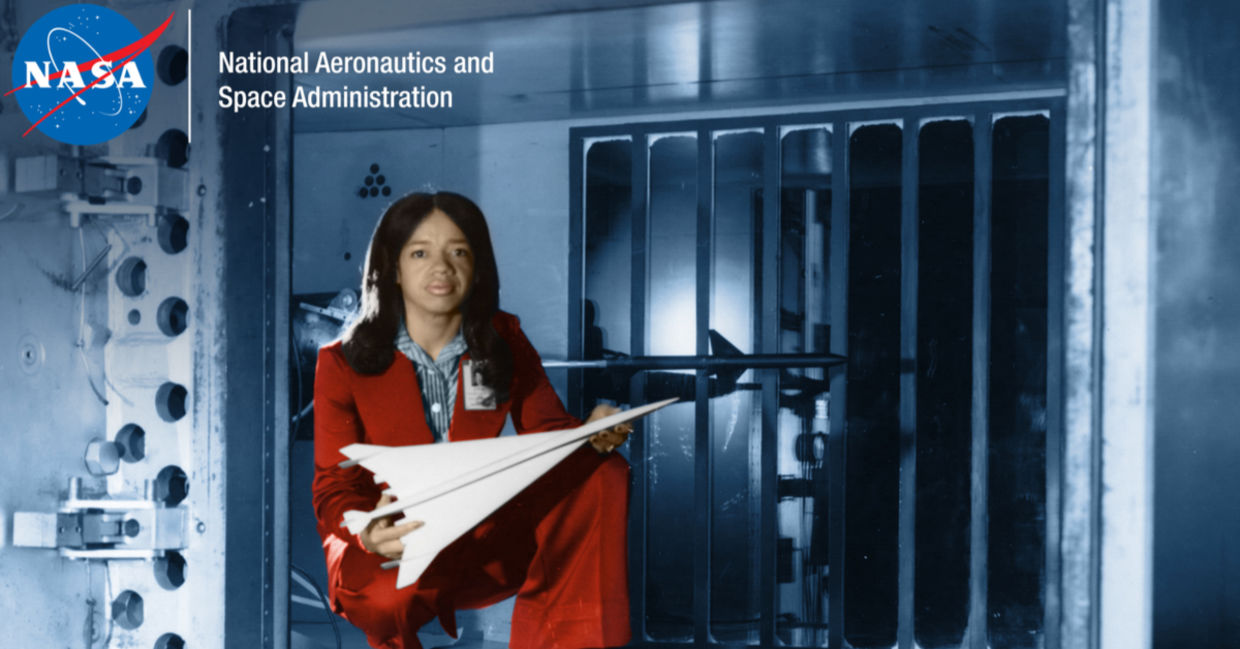
NASA aerospace engineer Dr. Christine Darden (Courtesy NASA)
When the book and movie Hidden Figures came out in 2016, few Americans knew the story of the black women mathematicians who made the space race possible. But Black History month is the perfect time to honor their accomplishments.
The women who worked at NASA's Langley Research Center in Hampton, Virginia were the "human computers" who did the calculations that made space travel a reality according to the space agency.
Four women, Engineers Christine Darden and Mary Jackson, as well as mathematician Katherine Johnson and computer programmer Dorothy Vaughan were awarded Congressional Gold Medals' the highest civilian award in the US according to a press release from Senator Kamela D. Harris. Vaughan and Jackson, who passed away, were both awarded posthumously.
Harris and a bipartisan group of senators introduced the bill to honor the four women – a fifth medal was given to all women who contributed to NASA during the space race – in October 2019. The Hidden Figures Congressional Gold Medal Act was signed into law that November.
"The groundbreaking accomplishments of these four women, and all of the women who contributed to the success of NASA, helped us win the space race but remained in the dark far too long," Harris in the press release.
Katherine Johnson calculated trajectories for many NASA space missions including Alan Shepherd's Freedom 7 mission and John Glen's Friendship 7 mission that orbited the earth. She was the first woman author to be recognized for writing a report from the Flight Research Division.
Dorothy Vaughan was the first woman of color to be a supervisor at NACA (that became NASA) when she led the West Area computing unit. She later, according to the press release, became an expert programmer in FORTRAN.
Mary Jackson was already a force to be reckoned with when she petitioned the city of Hampton to allow her to take a graduate-level course in math and physics at night at the all-white Hampton High School. She was the first black engineer at NASA.
Dr. Christine Darden who became a NASA engineer 16 years later worked to transform aeronautic design and wrote over 50 articles on the topic. She was the first person of color to be promoted to a senior executive.
Virginia Senator Tim Kaine, who also introduced the cross-party legislation said in a NASA press release. “It’s more than a recognition, it’s also a powerful encouragement to try and be that society that nourishes and grows the talents of all.”
The reception to honor the women took place on December 9, 2020 and featured a keynote address from Darden, NASA deputy director Melanie Saunders and author Margot Lee Shetterly. The invites included local officials and local high school STEM students.
“Once you take the first step, anything is possible,” Shetterly said during the event.
You can read more about these extraordinary women in Shetterly's book Hidden Figures: The American Dream and the Untold Story of the Black Women Mathematicians Who Helped Win the Space Race.
“I would to see us have the capability of routine flight in space almost like we do airplanes today on Earth,” Darden said at the ceremony when asked about the future of space travel.
These pioneering women helped the space agency take its first steps in the Apollo program over 50 years ago and the agency has continued to use the knowledge they cultivated to this day in the Artemis program that will land the first woman and next man on the moon in 2024 and the next big leap to Mars.
What was once a dream, became a reality due to the courage and perseverance of these women who are hidden no more.
YOU MIGHT ALSO LIKE:
15 Black Women Civil Rights Leaders You May Not Have Heard of
9 Contributions of African Americans in The Arts
NASA's Historic First All-Female Spacewalk Goes Off without a Hitch







